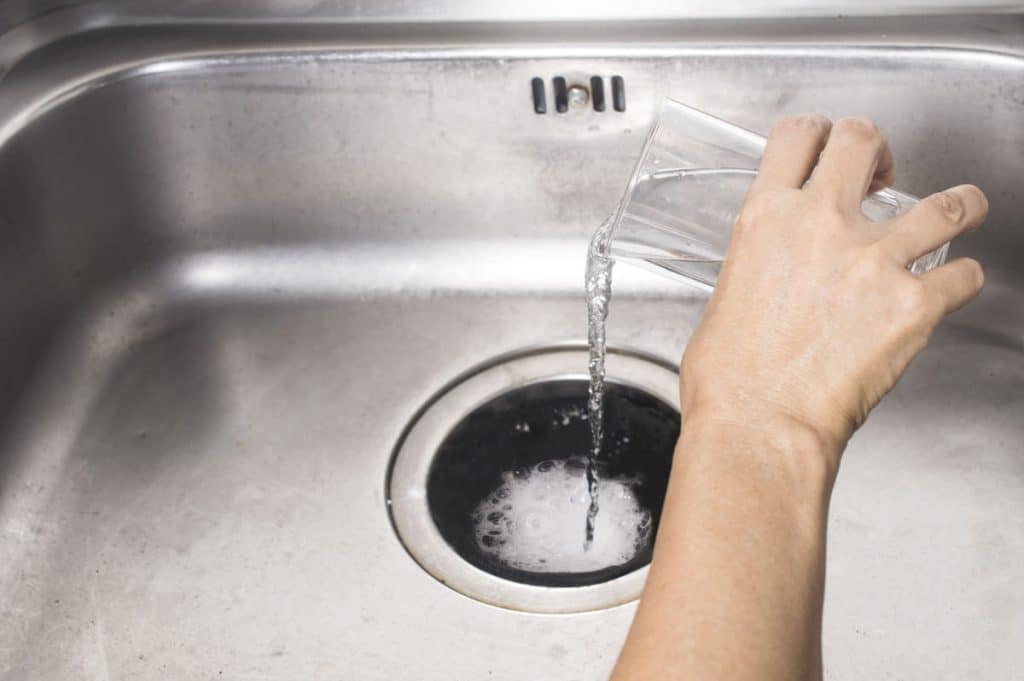Baking soda and vinegar can break down mineral deposits that build up in drains and cause blockages.When is comes to common drain issues, cleaning drains with baking soda and vinegar is often recommended as a DIY solution. The idea behind this is that when you mix baking soda and vinegar, a chemical reaction occurs that creates a fizzy foam that can help break up clogs and clear your drain.
SEE MORE: 15 Simple Cleaning Tips That Are Both Effective & Budget-friendly
Here are the steps to unclog a drain with baking soda and vinegar:
Step 1: Heat boiling water
Heat boiling water in a tea kettle on the stovetop or in a large pourable measuring cup in the microwave. You will need about four cups of boiling water for this method.

Step 2: Pour the boiling water down the drain
Pour the boiling water down the drain to dissolve and wash away any grease or oil clogs. Be careful not to burn yourself with the hot water.

Step 3: Pour baking soda into the drain
Pour half a cup of baking soda into the drain. You can use a funnel to make it easier to pour directly into the drain opening. Baking soda is a natural cleaner and deodorizer that can help break down organic materials in the drain.

Step 4: Pour vinegar into the drain slowly
Pour half a cup of vinegar into the drain slowly. You can use white vinegar or apple cider vinegar for this step. Don’t be surprised by the audible reaction that occurs. Baking soda is an alkaline substance and vinegar is a mild acetic acid. When the two are mixed, they react somewhat dramatically to neutralize one another; the fizzing action you hear is the reaction that will often dislodge clogs in your drain.

Step 5: Cover the drain with a cloth
Cover the drain with a cloth or a drain plug to keep the reaction down below the drain surface. This will help build up pressure and force the clog to move. Let the mixture sit for about 30 minutes to an hour.
Step 6: Remove the cloth
Remove the cloth or drain plug and flush the drain with more boiling water. This will help clear out any remaining debris or residue from the drain. If the drain is now flowing, run hot tap water for a few minutes to rinse the drain. If the drain is still clogged, repeat the previous steps or try a different method.
Please note that this method is not guaranteed to work for all types of clogs. If the clog persists, it may be necessary to use a plunger or call a professional plumber.

